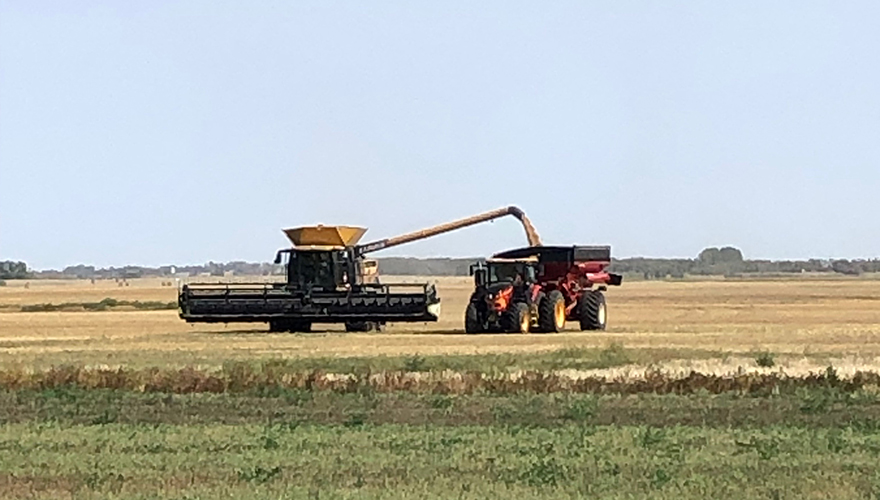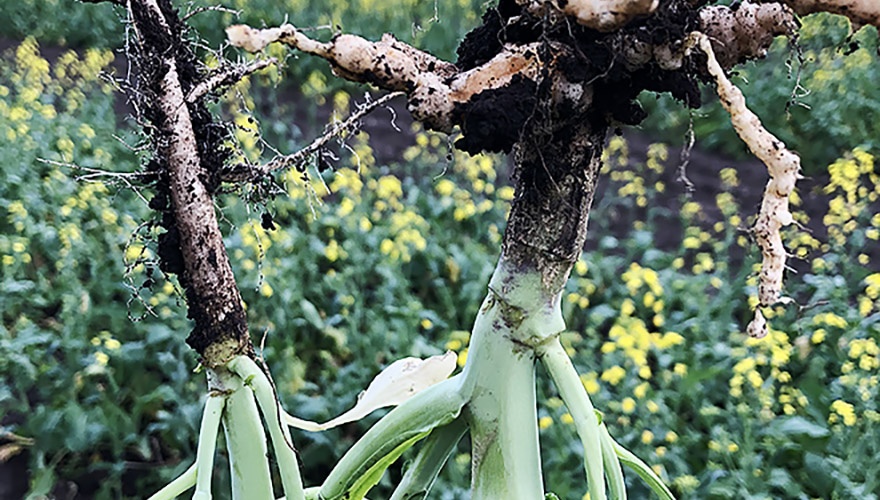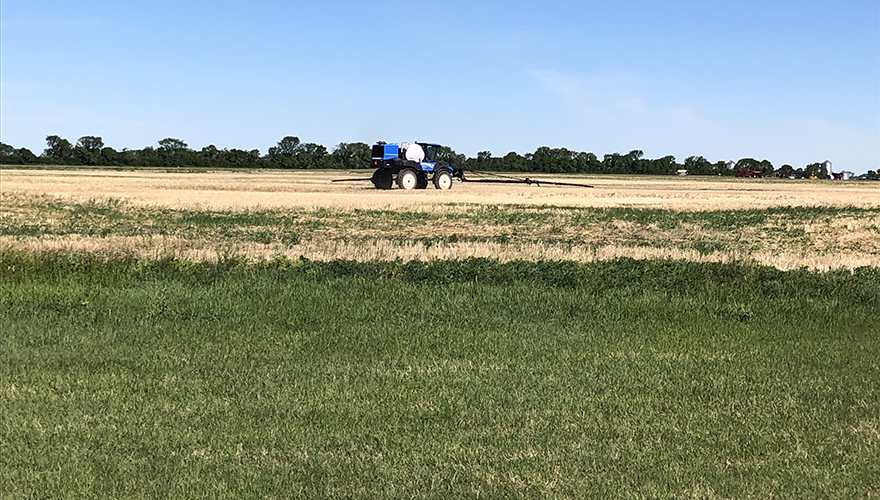Posted Febrary 01, 2017
Canola Fertility
Long-term soil management just one tool to maximize canola yields
When trying to maximize canola yields, an excellent fertility program is crucial. Canola varieties today are better than ever at reducing the risk of disease and improving characteristics like standability and maturity. But according to Lyle Cowell, Manager of Agronomic Services with Nutrien Ag Solutions, no matter how good the options, canola variety selection will not influence nutrient requirements. So what are the most effective tools available to canola growers to maximize yield?
A big toolbox
Agronomic tools such as better seedbed quality, diverse rotations, proper fertilizer application timing, effective weed control and careful harvesting methods, can be used effectively to manage and maximize canola yields. But it all starts with selecting the right variety, with the right mix of attributes, in the right field with high fertility.
First decision – varieties
Every growing season begins with the most important decision – selecting the variety. Most canola growers will use yield as a driving factor in that choice.
“The yield component is obviously essential. However, there are a number of canola breeding programs that now have very little difference between peak yield potential. When we are setting a very high yield goal, the other attributes of a variety become very important. Standability, disease tolerance and weed control options are perhaps the next three most important measures of a variety. For some growers, the variety maturity is an additional consideration.”
For many years Jon Prins has been growing canola with three generations of his family including his grandfather and his father, Kent Prins, near Fort Saskatchewan, Alberta. They switch up the canola varieties seeded year-to-year on approximately 2,500 acres. “Right now we are switching between Round Up Ready and Liberty varieties to help manage weeds,” said Prins. This allows them to select crop protection options in different groups with different modes of action.
Soil management
Everything starts off with very fertile soil. “A high yielding crop is not going to be achieved in just one year. It will be the end result of well-managed soil over many years,” said Cowell.
Prins has 25 years of data on his fields to help him make accurate nutrient decisions, along with soil tests and agronomic advice. They run soil tests on their land every year or two to ensure they are making sound decisions. “There are definitely fields that have more potential,” says Prins. “We document yields, soil sample regularly and watch inputs so we know how we should approach each field.”
With the goal of a high yield in mind, the farmer really needs to start with the right field.
“For much of our western Canadian soils, the primary yield limitation would be nitrogen and phosphorus,” says Cowell. “Not all of the N and P will be supplied by fertilizer, and in fact to achieve very high yields, a farmer should select a field with very high natural fertility and excellent soil tilth.”
Crop rotations
The importance of good crop rotations cannot be overstated, according to Cowell. “Crop rotation can impact soil fertility, soil- and residue-borne diseases, insect pest pressure and seed bed quality. It is a huge factor, and one that can affect many different elements of agronomy.” To aim for very high yields for a specific field, a diverse crop rotation before the canola crop tends to be a benefit.
Fertilizer application
The four R’s of nutrient stewardship management are critical to remember when discussing fertilizer management – right time, right rate, right product and right placement. “You really need to have all of these in place to hit big yields,” says Cowell. “For example, nitrogen fertilizer needs to be applied at a sufficient rate very early in the season for the canola crop and the nitrogen should be banded under the soil to minimize loss and immobilization by previous crop residue. Canola is a cool season crop with a short growing season, so late additions of nutrients are often not effective. Before we look for a new magic bullet, we need to focus on these basic steps.”
Farmers know that canola has a high demand for sulphur relative to other crops. “Sulphur in a sulphate form can be quite efficiently applied as a top dress application before or soon after seeding canola,” says Cowell. “It’s a soluble nutrient that will quite easily move to the root system. However, phosphorus is not very soluble in soil, cannot be easily absorbed through leaf tissue and must be available to the crop quite early in the season. Most phosphorus should be applied near the developing root system. Canola seedlings start off with a pretty small root system, so a supply of P fertilizer in the seed row is important”
While seed row P fertilizer is important, farmers should be aware of the ‘safe rates’ that are applied with their individual equipment for the soils on their farm. It is important to remember that roots only take up crop nutrients in a salt form dissolved in soil water. While this is required, if there are too many fertilizer salts near the roots system, it can also damage the seedling. “This can become an issue when we are trying to achieve very high yields with very high rates of fertilizer,” says Cowell. “I think it’s still wise to apply at least some of the phosphorus fertilizer with the seed, with a safe rate based on soil conditions. The balance of required fertilizer will need to be applied out of the seed row.”
“When we expect to grow a big yield, we know this will require a lot of nutrients, but these need to be applied in consideration of the 4R fertilizer principles.”
No magic bullet
A good yield is the product of many factors. Lyle Cowell sums it up well. “Soil fertility management will certainly vary per soil zone and localized soil texture. Soil fertility is far more variable than the actual crop demand for nutrients. Canola variety selection will have little influence on nutrient requirements. The yield goal of a field should determine fertilizers rates, not the variety. I would suggest that a farmer select a variety for the right characteristics for each farm and field and set realistic yield goals. Fertility requirements will then need to reflect the yield goal and native fertility of the soil.”
And at the end of the day, there is one variable that has the greatest impact on the health and yield of the crop and it is completely out of the farmer’s control – the weather. “You can do many things to maintain yield but the biggest factor will always be the weather and growing conditions,” said Prins. Some things never change.
FEATURED LINKS
NEWSLETTER
Want to stay caught up in all things agriculture? Sign up for the newsletter and get all the latest news straight to your inbox.
Corn Western In Canada
Posted January 31, 2017





